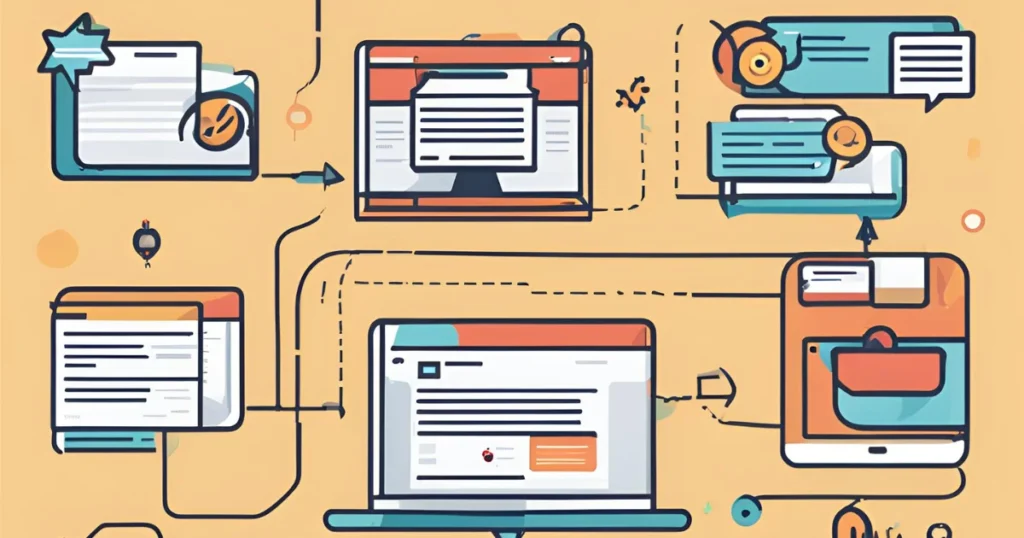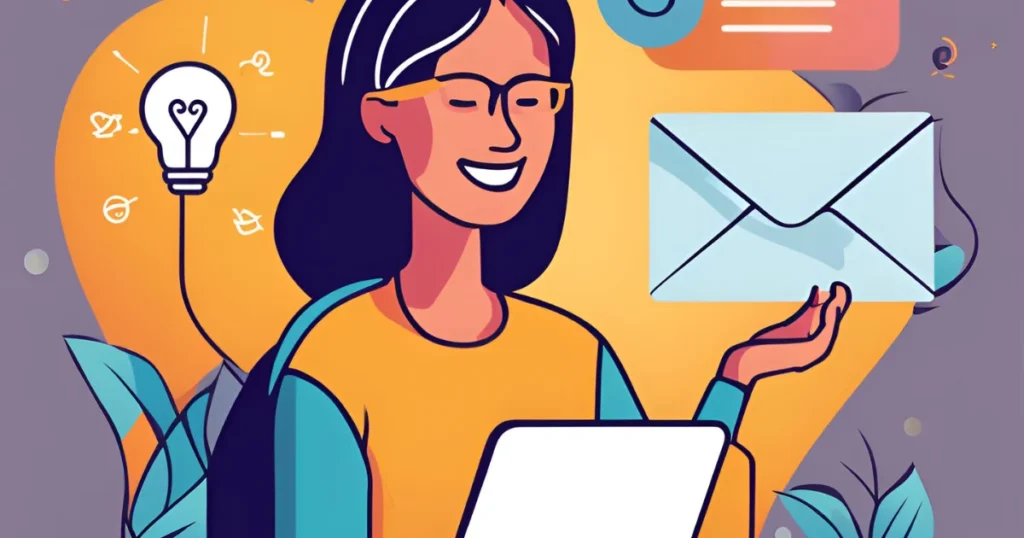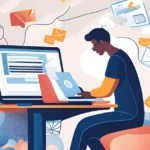If you’re wondering how to streamline your email writing process, ChatGPT is a powerful tool that can help you craft professional, personalized emails in minutes.
With the proper prompts, ChatGPT can assist in creating explicit, concise, and customized emails that meet your business or personal needs.
In this guide, I’ll show you how to effectively use ChatGPT to write polished, professional emails that align with your goals.
Why Use ChatGPT for Email Writing?
ChatGPT can make email writing faster, easier, and more effective. It’s like having a writing assistant that works at lightning speed to help you organize your thoughts, structure your message, and adapt the tone based on the recipient.
- Save Time: ChatGPT drafts emails quickly, so you’re not spending hours staring at a blank screen.
- Enhance Clarity: It creates well-structured and easy-to-read emails, reducing unnecessary wordiness.
- Personalization: ChatGPT can tailor its tone and style to different emails, making them feel personal yet professional.
- Overcome Writer’s Block: You’ll never struggle to start an email again—it generates content instantly based on your input.
Getting Started with ChatGPT for Email Writing
Using ChatGPT to write emails is easy and intuitive. Here’s how to get started:
Step 1: Access ChatGPT
First, access ChatGPT through platforms like OpenAI or any app that integrates ChatGPT capabilities. You can also use browser extensions or plugins to integrate ChatGPT with Gmail, Outlook, and other email clients.
Step 2: Define Your Email Purpose
Before generating your email, clearly define the purpose of the message. Is it a follow-up, a sales pitch, or a networking introduction? ChatGPT works best when it understands the context. Here are a few email types and their purposes:
- Formal Business Emails: For professional correspondence or pitching ideas.
- Casual Networking Emails: To keep the tone light but engaging for connections.
- Sales Outreach Emails: To introduce your product or service and capture attention.
Step 3: Craft Effective Prompts for ChatGPT
The quality of your ChatGPT email depends on how well you prompt it. Give clear instructions and include specific details such as:
- Recipient Information: Are they a colleague, a potential client, or a recruiter?
- Purpose of the Email: State why you’re reaching out (e.g., “Write a follow-up email after a sales meeting with a client”).
- Tone and Style: Formal, casual, friendly, or direct.
Example Prompt:
“Write a formal email to a potential client following up after our meeting last week. Mention our product benefits and suggest a time for a follow-up call.”
Customizing ChatGPT-Generated Emails
While ChatGPT can generate a solid email draft, you’ll need to fine-tune it to match your style and ensure accuracy.
Review and Edit
Before hitting send, always review the content for clarity, accuracy, and grammar. While ChatGPT is good at generating structured text, adding your personal touch is essential to ensure it reflects your voice.
Adjust the Tone
ChatGPT can adapt its tone based on your input, but sometimes, a minor tweak can make a big difference. For example, you should inject humour if you’re writing to a friend. You may prefer a more formal tone if it’s a business email.
Refine the Message
Depending on the recipient and email type, you should shorten or expand certain sections. Use ChatGPT to help rephrase or polish specific sentences.
Example: If you need a more concise email, ask ChatGPT to shorten the text while maintaining the core message.
Advanced Tips for Maximizing ChatGPT in Email Writing
- Use ChatGPT for Subject Line Suggestions: A compelling subject line is crucial for grabbing attention. ChatGPT can generate several options for you to choose from. Prompt: “Suggest five catchy subject lines for a follow-up email after a product demo.”
- Automate Routine Emails: For repetitive tasks, like sending meeting confirmations or weekly updates, ChatGPT can create email templates that you can reuse, saving you time.
- Pair ChatGPT with Grammar Tools: To polish your email further, use tools like Grammarly or Hemingway App in conjunction with ChatGPT. These tools will help with sentence structure and tone adjustment and catch any errors ChatGPT might miss.
- Leverage Multilingual Support: If you need to communicate with international clients or colleagues, ChatGPT can write emails in multiple languages. This is particularly useful for businesses that operate in different regions.
Real-World Use Cases of ChatGPT for Email Writing
Here are some practical examples of how ChatGPT can improve email communication:
- Professional Networking: After a conference, you can prompt ChatGPT to write a follow-up message, express gratitude, and propose a time to connect further.
- Sales Outreach: Use ChatGPT to draft personalized cold emails introducing your service, highlighting benefits, and including a call to action.
- Customer Support: ChatGPT can help draft empathetic and clear responses to customer inquiries or complaints.
- Job Applications: For job seekers, ChatGPT can write customized cover letters and follow-up emails that highlight relevant skills.
Common Mistakes to Avoid When Using ChatGPT for Emails
While ChatGPT is a powerful tool, there are a few pitfalls to avoid:
- Over-reliance on A.I.: Always review the content—don’t rely on AI-generated emails without checking for accuracy, tone, or personalization.
- Vague Prompts: Be specific in your input. The more details you provide, the better your email output will be.
- Ignoring Context: Ensure the email considers the recipient’s context (e.g., addressing a client vs. a friend).
- Tone Mismatch: While ChatGPT can adapt its tone, it’s essential to check whether the tone matches the context—formal emails should feel professional, while casual emails should be more relaxed.

Conclusion
ChatGPT is a game-changer for anyone looking to write emails faster and more effectively in today’s fast-paced digital world.
Whether you’re writing formal business letters or casual follow-ups, ChatGPT can assist in crafting well-structured, precise, and personalized emails with ease.
Start experimenting with different prompts today and see how A.I. can revolutionize your email communication.
F.A.Q.s
1. Is ChatGPT suitable for writing professional emails?
Yes, ChatGPT can write highly professional emails, provided you give it clear instructions about the tone, context, and purpose.
2. How can I use ChatGPT for better email subject lines?
You can prompt ChatGPT to suggest multiple subject lines based on the content and goal of your email, ensuring they are engaging and relevant.
3. Can ChatGPT help with follow-up emails?
Absolutely. Just summarise your previous interaction, and ChatGPT will generate a concise, polite follow-up email.






